Field Review: Seacam Seaflash 60D Strobes
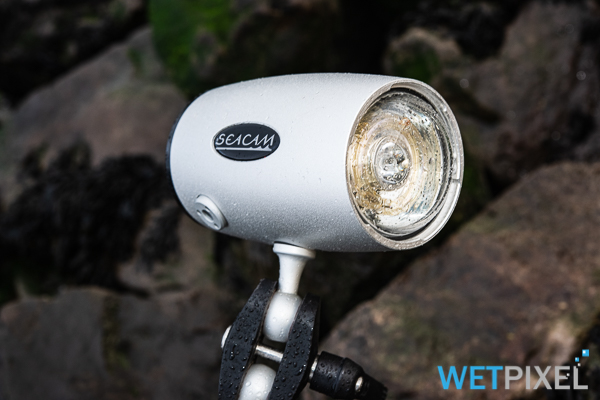
The vast majority of underwater strobes, or more correctly flashes, use flash tubes. These comprise a hermetically sealed glass tube, which is filled with a noble gas, usually xenon, and electrodes to carry electrical current to the gas. The type of tube used directly affects the quality of the light the strobe outputs.
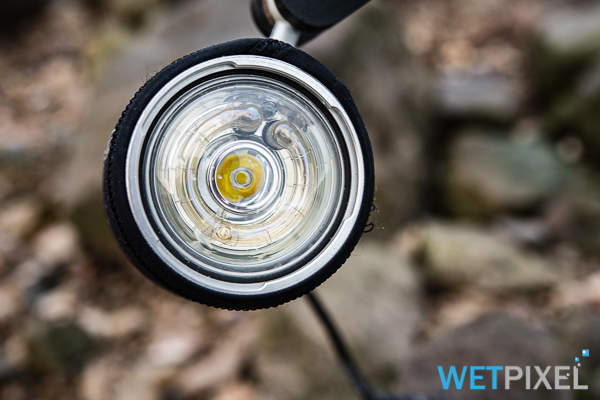
Underwater strobes use either linear or circular flash tubes. The pattern of light that is generated by the strobe is unsurprisingly directly affected by the shape of the tube that creates it. In general, most strobes use linear flash tubes, sometimes in pairs. These are often arranged in a T shape, and then a reflector is used to direct the flash output in as uniform a manner as possible. Round flash tubes natively produce a more even spread of light but due to the increased length of the tube, need more energy. This energy is created via larger capacitors, which in turn tends to mandate bigger battery packs.
Seacam’s design philosophy has been to use circular flash tubes. This has meant that their strobes have tended to be big, powerful units that have sizeable proprietary battery packs. In many ways, this design philosophy has produced some very effective strobes for wide angle shooting. While they can also be used for macro photography, their form factor and the power that they offer make them somewhat limited. Also, the increasingly challenging weight limits being instituted by airlines is creating a demand for lighter strobes.
Seacam 60D strobe
Hence, Seacam introduced the Seaflash 60D. It offers a 60Ws output over a 130° beam angle with a color temperature of 4400°K. This gives an (underwater) guide number of 8 with a base ISO of 100 and at 1 meter of distance.
The flash is constructed of a saltwater resistant alloy and hard anodized with the trademark Seacam silver finish. Sized at 150 x 75 (80)mm (6 x 3 inches) and weighing 550g (1.21 lbs.) on the surface, the 60D is significantly smaller and lighter than its siblings. When used with a more extended macro port, it can sit in between the housing’s handles and the end of the port. Maximum operating depth is 80 meters (260 feet).
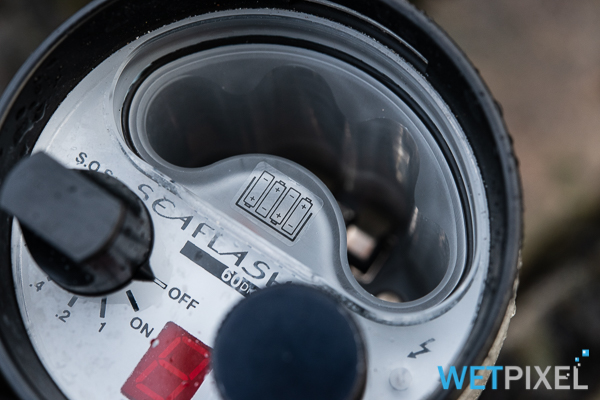
It is powered by 4 x AA batteries, and can “use any rechargeable AA-sized NiMH batteries.” It is equipped with an adaptive electronic controller, which safely controls the voltage and current use of the power supply, and this avoids over-discharge and prevents possible short circuits in batteries.
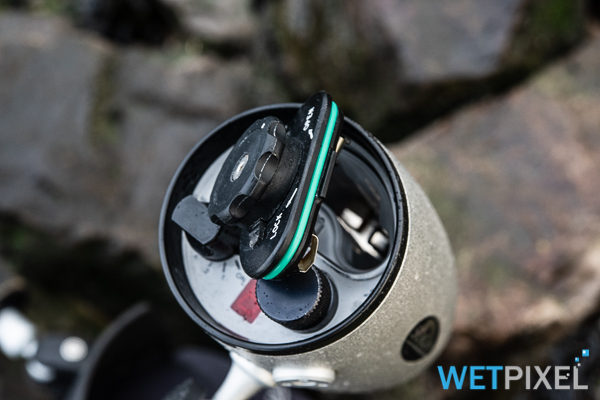
The battery compartment is sealed with a double o ring and is physically separated from the main strobe compartment to minimize the damage caused by floods.
Battery life is specified at 200 flashes at full power, with a recycling time of 0.1 to 0.2 seconds, again at full power.
It is equipped with a 180 lumen LED spotting/pilot light with a 10° beam that quenches automatically when the strobe is fired.
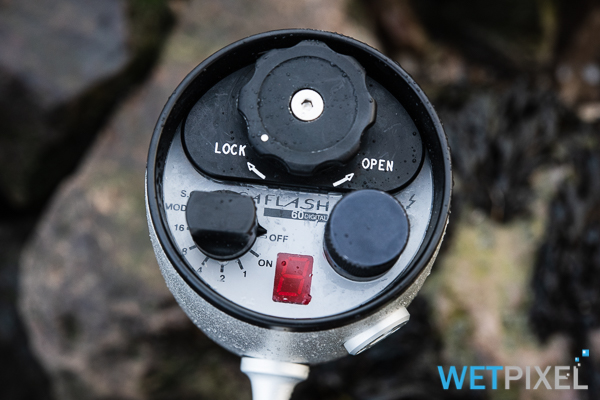
There is an LCD screen that provides information and feedback about output power levels along with the currently installed firmware version.
The strobe has a helicoiled 8mm thread for strobe arm attachment and a bayonet fitting for attaching diffusers and other accessories.
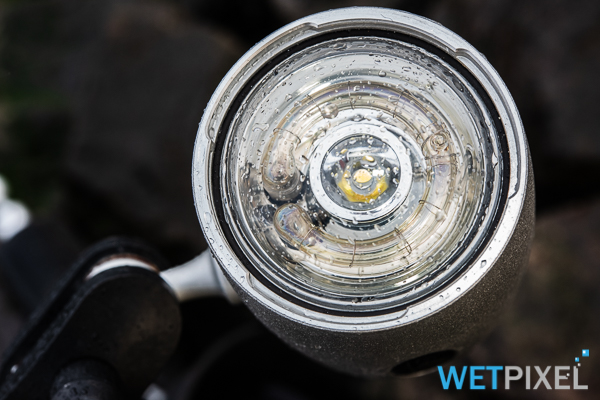
Options include a dome diffuser, macro protection ring, and a snoot.
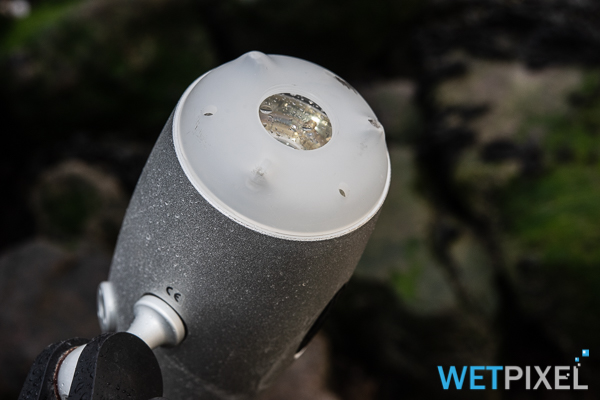
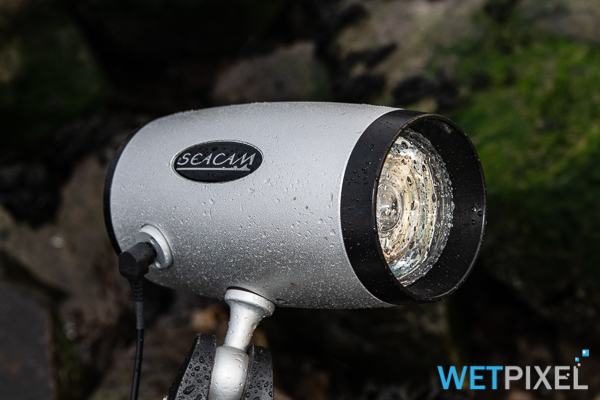
The 60D can be triggered via N5 or S6 cable (bulkhead to be specified when ordering) or L type fiber optic cable.
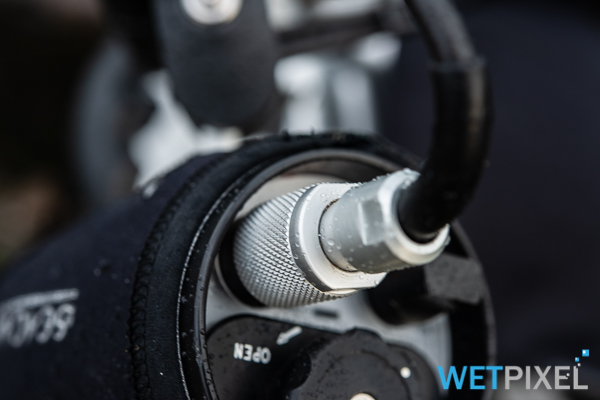
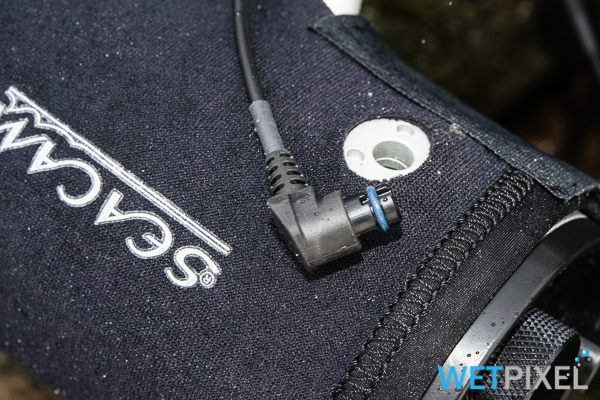
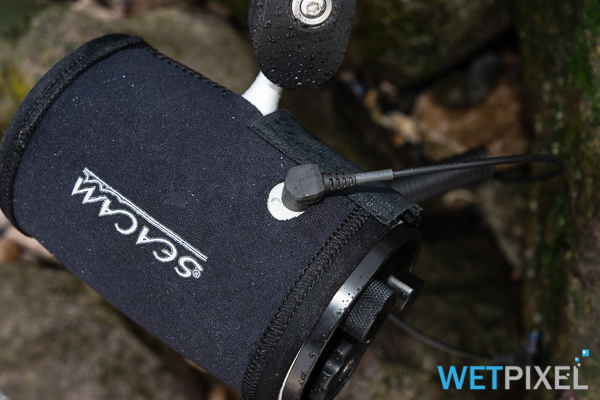
When connected electrically, it supports either CANON e-TTL or NIKON i-TTL along with S-TTL, Dual-TTL, Film TTL and manual power adjustment via five steps. When connected via optical fiber, it offers manual or TTL slave exposure (from a camera’s flash) modes only. Note that there are different firmware versions for Nikon and Canon cameras.
Rear curtain sync is available for both Nikon and Canon users (if the camera supports it) and high-speed synchronization (HSS) in TTL and manual mode, with sync speeds of up to 1/8000s possible.
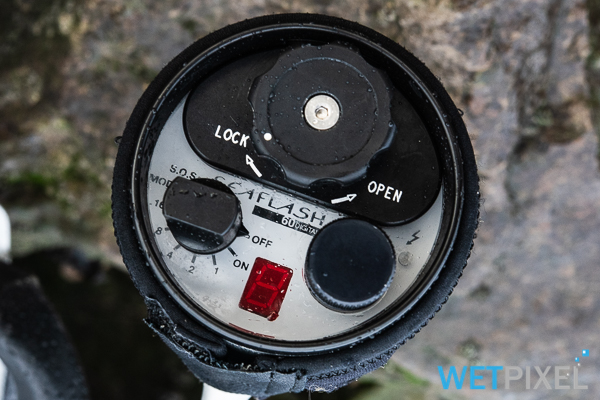
Unlike most strobes, the 60D has a single rotating control. This switches the strobe on and off, controls flash output, enables the focus light and change modes. It does so via discrete combination of movements of the control. Seacam has launched a series of video tutorials about the strobe and how these settings are applied:
Lastly, the Seaflash 60D has an SOS mode that flashes a continuous SOS pattern to get attention in an emergency.
Seacam 60D strobes: Introduction and specifications.
Seacam 60D strobes: Field review.